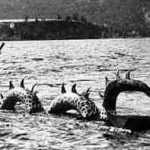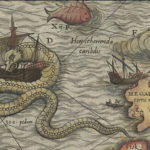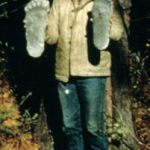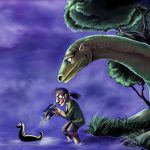Aka : N’yamala, Guanérou, Diba
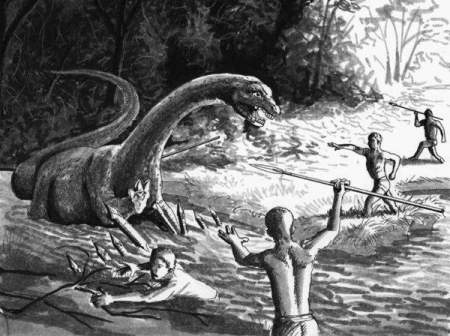
Description
In 1913, a German expedition in Congo heard from pygmies about an animal they called mokele-mbeme, which means "one who stops the flow of rivers" in the Lingala language. They said this beast was about the size of an elephant or hippopotamus, with a long, flexible neck and a long tail like an alligator’s. It is usually described as being gray-brown in color. The pygmies claimed that the animal would attack and kill any humans that got too close to it, but it would not eat them, because of its strictly herbivorous diet. Similar descriptions have been given time and time again throughout central Africa, consistent with a sauropod or other small dinosaur. Some traditions, such as those of Boha Village, describe it as a spirit rather than a flesh and blood creature.
Dwelling
The Likouala swamps and Lake Tele in Congo. This primitive semi-aquatic forest has not changed much since the Cretacean and is almost untouched by man. It could harbor some strange animals that have survived through ages.
Sightings
Numerous expeditions have been mounted in search of mokele-mbeme, with mixed results.
In 1980 and 1981, monster-hunter Roy P. Mackal headed explorations into the Likouala and Lake Tele regions of the Congo, reputed hot spots of dinosaur sightings. But he did not collect anything but oral testimonies. So did his followers.
In 1992, a Japanese film crew captured some of the best photographic evidence of a mokele-mbeme ever presented. They were filming aerial footage from a small plane over the area of Lake Tele to obtain some panoramic landscape shots for a documentary. They noticed a large shape moving across the surface of the lake and leaving a V-shaped wake behind itself. The cameraman zoomed in and got about 15 seconds of the object in motion before it dives under the surface. The resulting footage is very jumpy and indistinct, but it shows a vertical protuberance at the front of the object that could be a long neck.
The congolan zoologist Marcellin Agnagna claimed to have sighted the creature in 1983 during 20’ and at a distance not further than 250 m. Unfortunately, the pictures did not reveal anything.
Theories
According to the writings of biologist Roy Mackal, who mounted two unsuccessful expeditions to find it, it is likely that the Mokèlé-mbèmbé is a reptile. Of all the living reptiles, Mackal argues that the iguana and the monitor lizards bear the closest resemblance to the Mokèlé-mbèmbé, though, at 15 to 30 feet (9.1 m) long, the Mokèlé-mbèmbé would exceed the size of any known living examples of such reptiles.
The idea of the Mokèlé-mbèmbé representing a relict sauropod has also been supported by some creationists, who believe the creature is a surviving dinosaur, and see this as supporting aspects of creationism.
The BBC/Discovery Channel documentary Congo (2001) interviewed a number of tribe members who identified a photograph of a rhinoceros as being a Mokèlé-mbèmbé. Neither species of African rhinoceros is common in the Congo Basin, and the Mokèlé-mbèmbé may be a mixture of mythology and folk memory from a time when rhinoceroses were found in the area.

